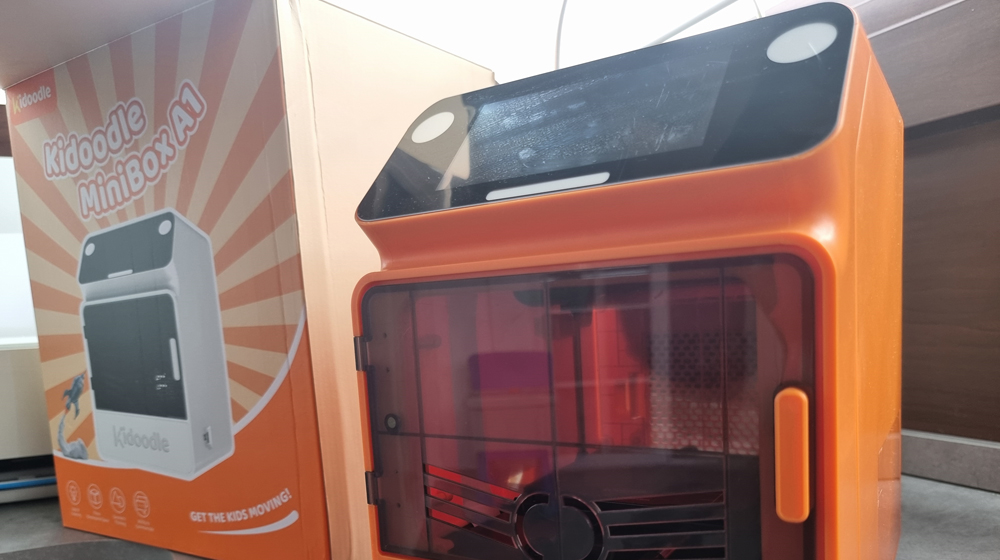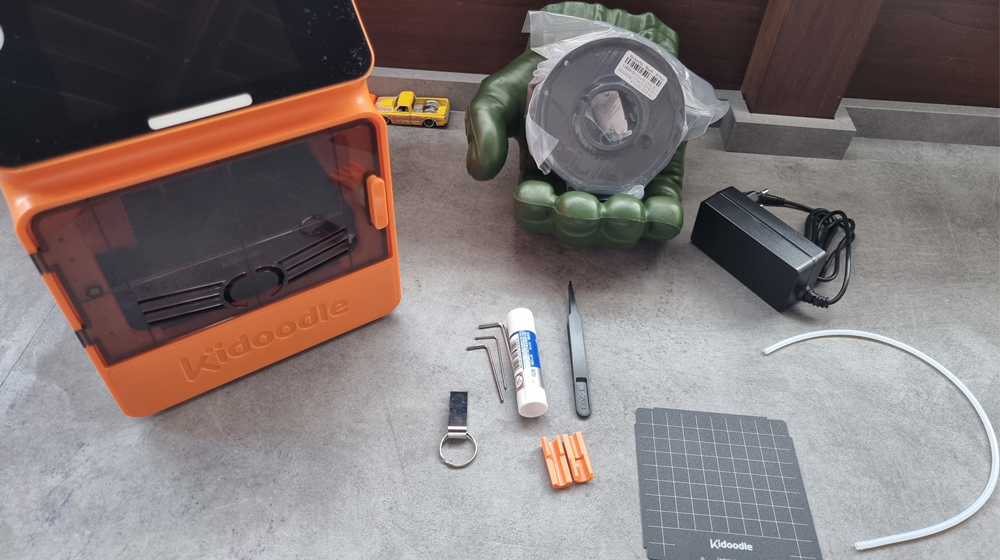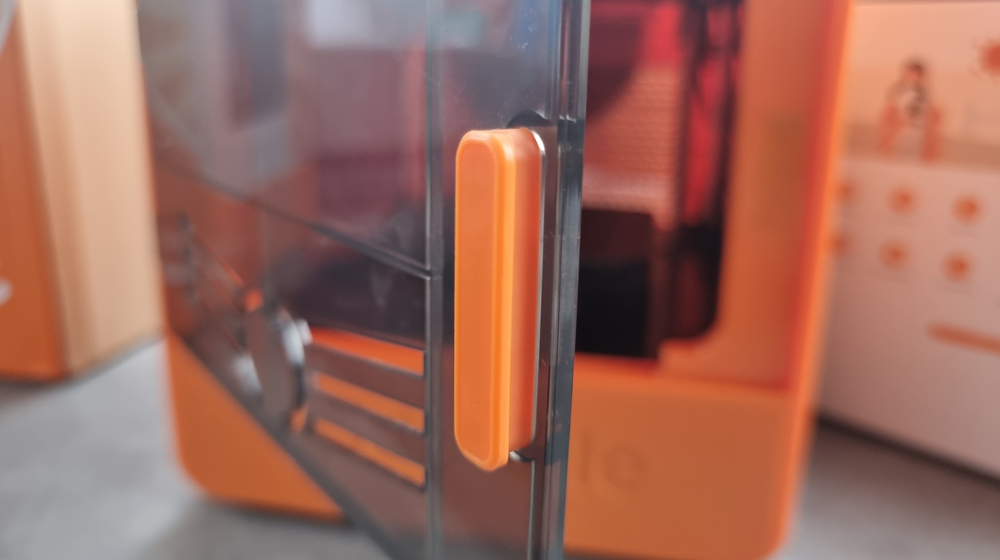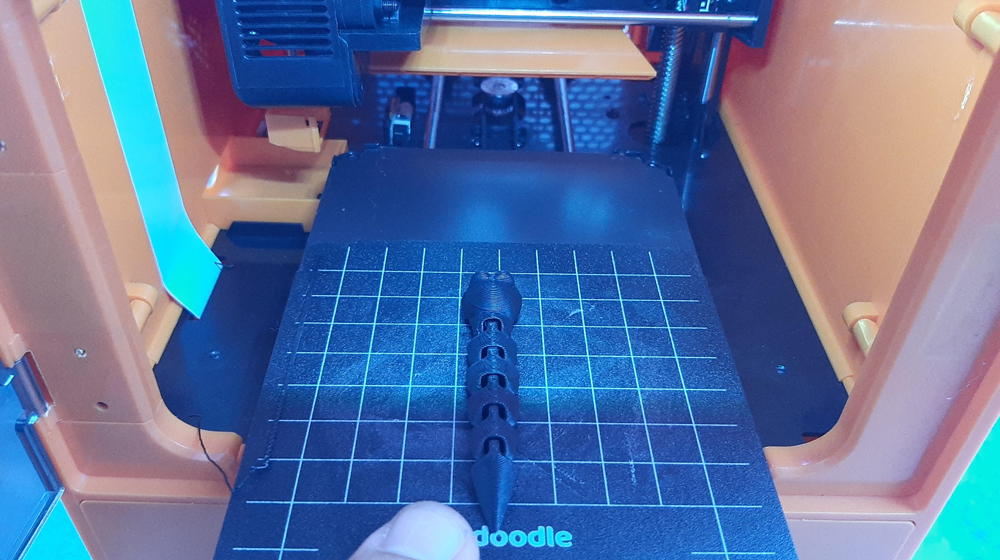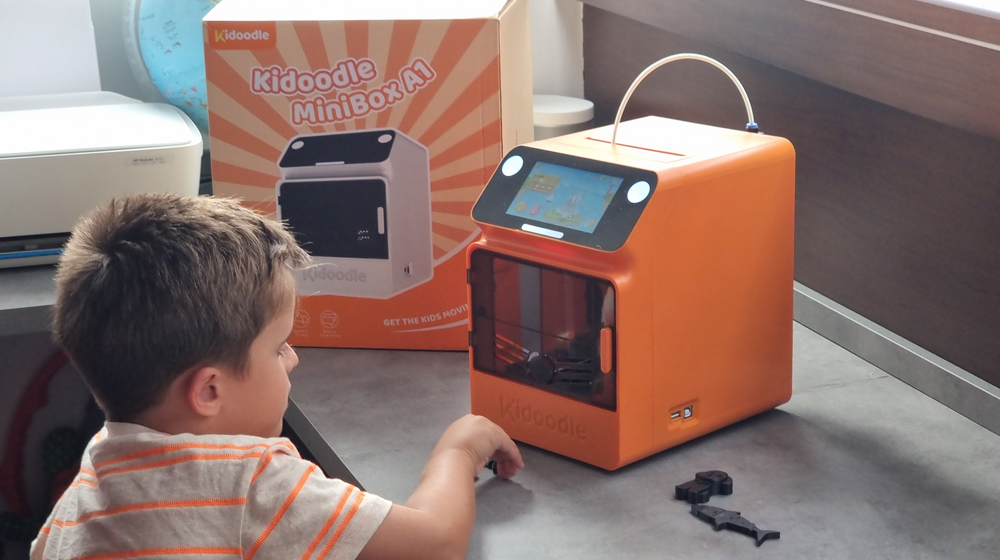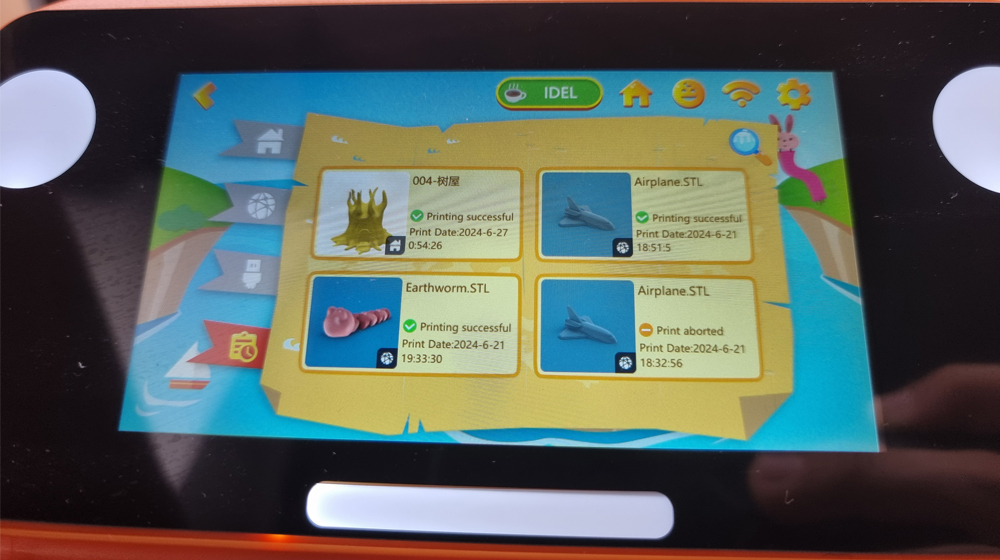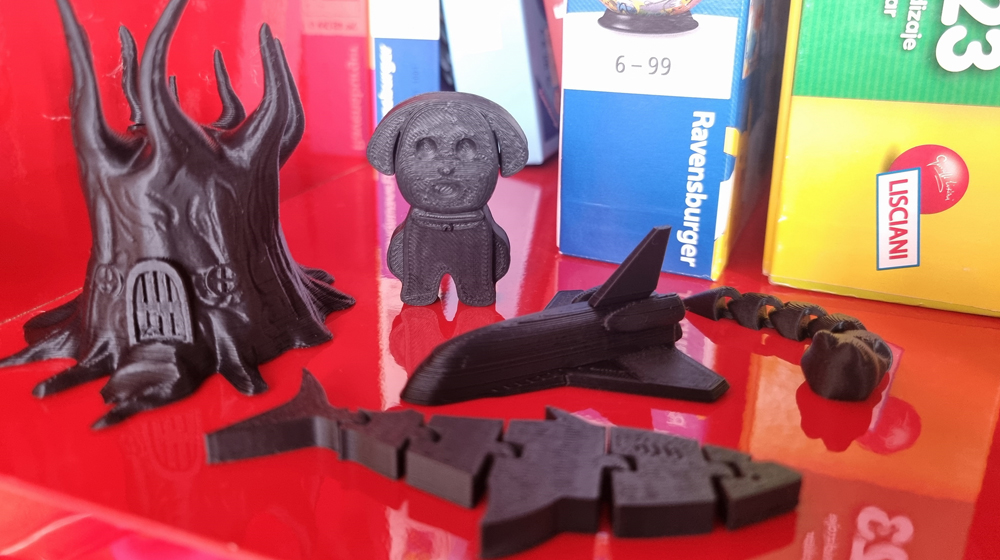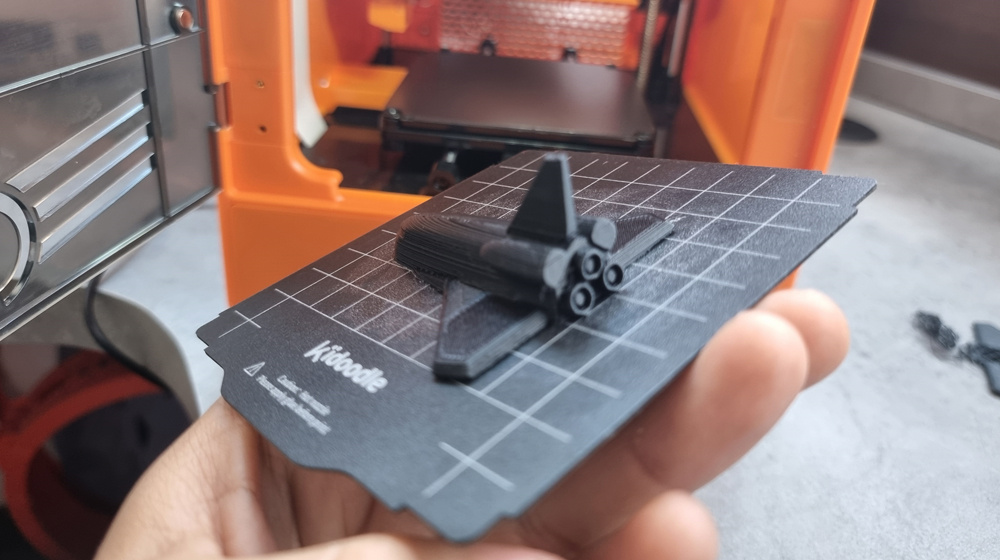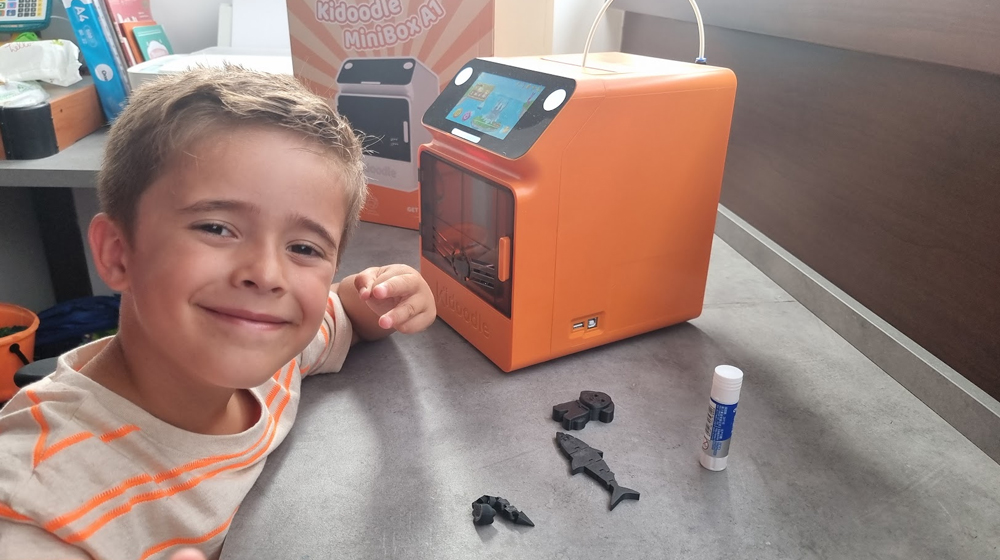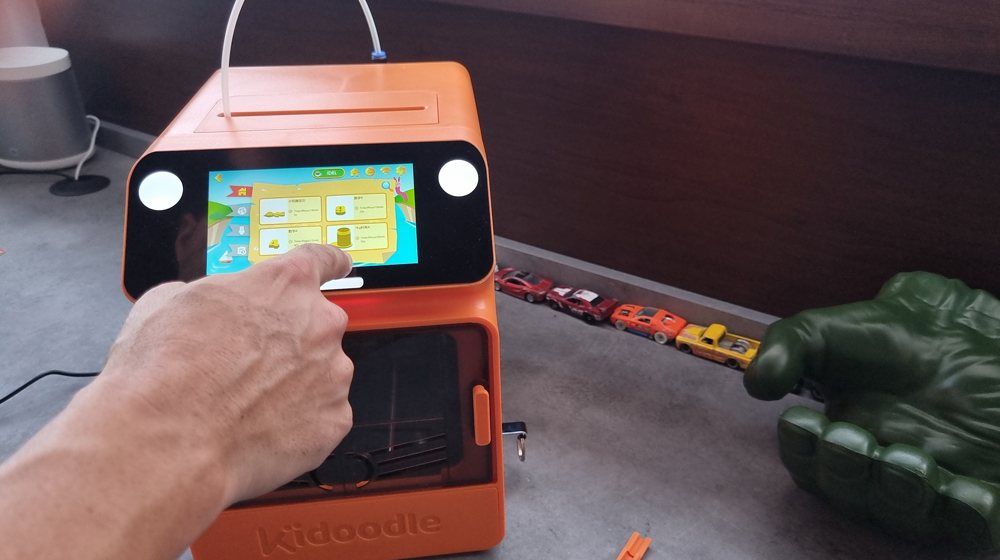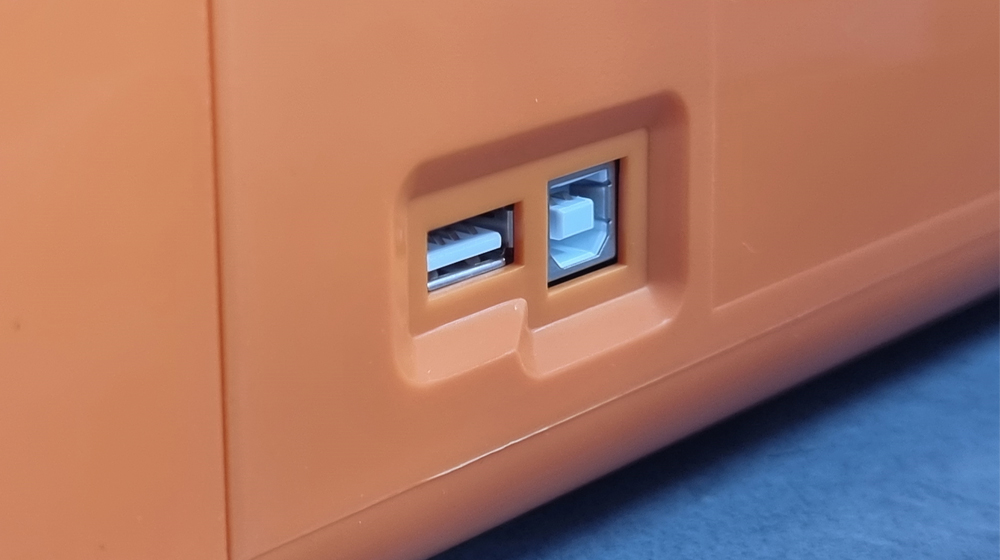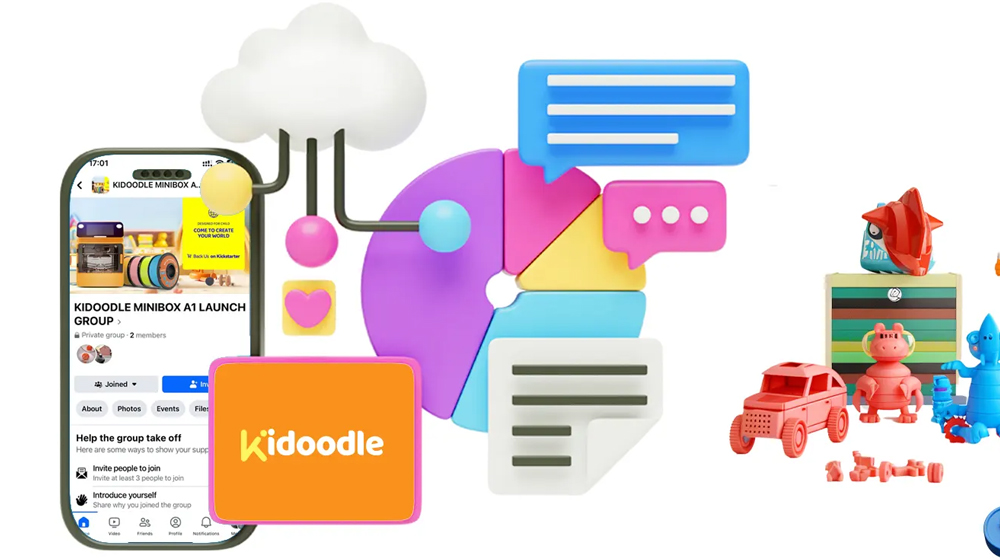Kidoodle Minibox A1, 3D printer for the little ones in the house
By Fabrizio Bulleri from Gizlogic
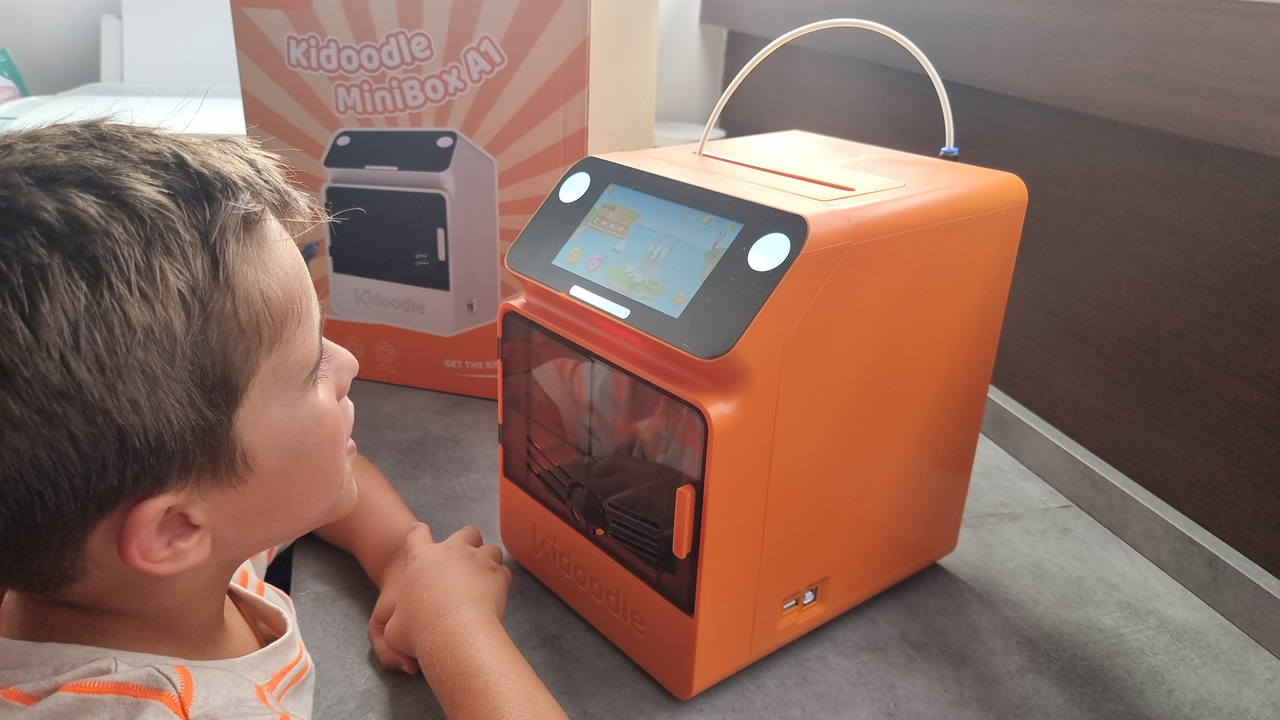
3D printing is an increasingly popular hobby, but due to its complexity it is not accessible to everyone… until now. Today we present the Kidoodle Minibox A1, a 3D printer aimed at children and teenagers , which in theory allows them to make their own toys with minimal effort and in a safe manner.
In this sense, we have tested this 3D printer and it seems to us to be an interesting device both to entertain the little ones in the house and to give them an educational experience, and who knows, perhaps it can help them with school projects or unleash their creativity. In terms of features, it is a well thought-out machine that emphasizes ease of use and safety for children, which naturally comes with some disadvantages, but we will explain all this later.
Technical characteristics of the Kidoodle A1
| KIDOODLE A1 | |
|---|---|
| Dimensions | 312x312x352mm |
| Weight | 2.5 kilograms |
| Technology | FDM |
| Print volume | 100 x 100 x 100mm |
| Nozzle diameter | 0.4mm |
| Layer size | 0.1 – 0.3mm |
| Printing accuracy | ±0.1mm |
| Maximum nozzle temperature | 250ºC |
| Supported materials | PLA/PLA+/SILK PLA, PETG, TPU, ABS. |
| Printing surface | PEI steel sheet |
| Print speed | 100mm/s to 600mm/s |
| Functions | Anti-child lock, resume printing, filament detection. |
| Cutting software | Cura Kidoodle Slicer and Kidoodle 3D |
| Screen | Yeah |
| Connectivity | USB, TF cards, Wi-Fi |
| Manufacturer's site | kidoodle3d.com |
A child-proof 3D printer
The Kidoodle Minibox A1 is a closed-back 3D printer that has a toy-like feel to it , which is appropriate considering its purpose, but make no mistake, this is a fairly complete and well-made machine.
It comes with a power adapter, a spare PEI sheet, 250g of test filament, platform glue, a hex key kit, tweezers, and a flash drive . Getting it up and running is easy, too – take it out of the package, remove the protective foam inside, plug it in, and then follow the on-screen setup steps, which prompt you to download the Kidoodle app.
Back to the main topic, the Kidoodle Minibox A1 is compact and lightweight , resembling an old TV, but the large screen and filament holders give away its nature. On the front we can see a transparent plastic door and inside it houses a print bed with a magnetic PEI surface .
With that in mind, the manufacturer took several measures to ensure the safety of children, and one of them is that the printing bed is not heated, so we must use glue to adhere the first layers.
If the door is opened while printing, the machine stops its operation and emits a very audible beep. This does not completely eliminate the risk of injury, as the nozzle also reaches high temperatures, so we still suggest keeping children supervised when using it.
We cannot overlook the colorful screen, which has an extremely intuitive interface that even a child could use (that's the idea), although we would like it to be in Spanish.
Performance, printing and features
For a "toy" printer, the Kidoodle Minibox A1 prints with a more than acceptable quality, but nothing surprising, and if what you want is a higher quality finish for your prints, obviously there are better options in this price range. Also, the build volume is somewhat limited, only 100x100x100mm, so we will not be able to print large models with it.
Where it really surprises us is in its construction speed, which can reach a maximum of 600mm/s, although the recommended point is always halfway. It is worth noting that at 100mm/s it is very quiet, so the quiet mode adjusts it to that speed, but it is quite the opposite when approaching full speed.
Be that as it may, it is faster than we would expect for a printer of this size; it can print the popular Benchy test model in a matter of 20 minutes and this is ideal, as children are not known for their patience.
Speaking of children, we can attest that a 4 year old can operate this machine once we have shown him the way. There is a preview of the preloaded models and we can choose from 6 categories totaling over 100 models. Interestingly, there is a randomizer mode that prints a model at random and does not tell us what it is until it is finished, perfect for indecisive users.
On another note, the Kidoodle Minibox A1 may have toy-like overtones, but it has everything you would expect from a functional 3D printer, including print resume in the event of a power outage and filament sensing. To top it off, its direct-drive extruder works with a wide variety of filaments such as PLA, ABS and TPU.
Connectivity and software
The printer is not lacking in connectivity options; we have at our disposal a classic USB port, a memory card reading slot and also Wi-Fi for wireless use .
If we talk about software, let’s start by saying that beneath that colorful interface is the Marlin 2.0 firmware used in many 3D printers. When it comes to slicing programs, the Kidoodle A1 comes with Cura Kidoodle Slicer , available for Windows and macOS. This version of Cura is simple, perhaps too simple for our taste, as we can only adjust the nozzle temperature, layer height, and enable supports, but for kids this should be more than enough. Other options include rotating the model, resizing, duplicating, and deleting it.
Finally, there is a mobile app called Kidoodle 3D that gives us access to the same controls available on the printer screen. From here we can upload models in G-Code format from the library and manage more than one printer from the company.

